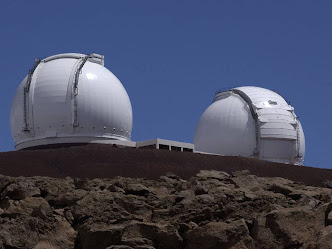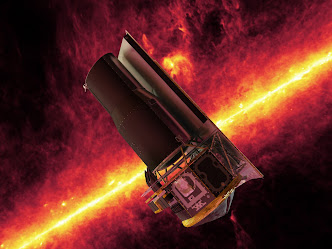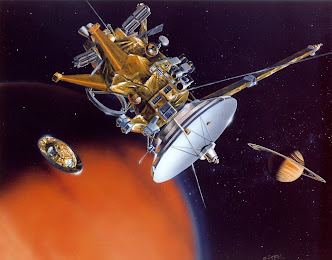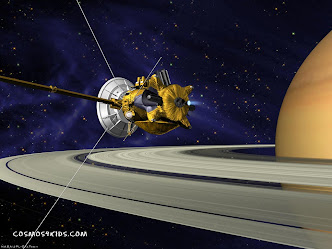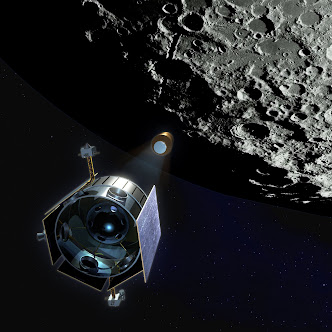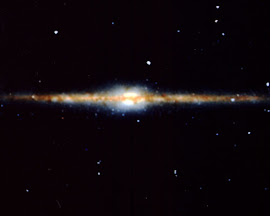1: Our Solar System
2: Galaxies
3: Nebulae
4: SuperNova
5: Black Holes
6: The Universe
7: Great Minds
MENU
1 Our Solar System
********
 The Sun
The Sun
- 150 Million Km from Earth
- 109 Times Bigger than Earth
- Avg Temperature: 5500 Deg Cel
- Composition: Hdrogen and Helium
- Energy comes from Nuclear Fusion
- Has strong magnetic field and violent eruptions (Plasma)
- We see this as visible light and heat.
- Lucky for us, the Earth has a atmosphere which cuts of 60% of this Radiation.
- Sun has 99.8% of the total Mass of our Solar System.
Age of Sun: 4.6 Billion yrs
Life Span: 9 Billion yrs

The sun and its atmosphere consist of several zones or layers.
How do we know ?
Mainly based on observations from Images and mathematical calculation.
The Core makes up 2% of the total Volume but contains half of the total Mass.

Plasma of the Sun. Can reach up to 100,oo0 miles
***********
Jupiter
A Jupiter Storm - In the Outer Planet
The Great Red Spot is a huge mass of swirling gas, 3 times the size of Earth. Imagine a storm lasting for millions of years.
Jupiter is the largest Planet in our Solar System - 1000 times the size of Earth
- 800 mil Km from the Sun
- A giant ball of gas & liquid, so if there is life it has to be air borne
- Surface composed of dense red, brown, yellow and white clouds
- Takes 12 years to go round the Sun
- However, a Day is only abt 10 hours
- Has strong magnetic fields and gravitaional pull
- Has 3 Rings around the Equator (20km thick)

Three Moons Cast Shadows on Jupiter (3 eclipses)
Jupiter has 16 satellites (moons). The 4 largest are called
Io, Europa, Ganymede & Callisto.
Probes to Jupiter
- Pioneer 10
- Pioneer Saturn
- Voyager 1
- Voyager 2
- Ulysses
- Galileo

Comet Shoemaker Levy 9 bombards Jupiter
In 1994, 21 pieces of the Comet Shoemaker Levy 9
crashed into Jupiter. If this cosmic collision were to
happen to Earth, it will cause another mass Extinction.
Remember the Extinction of Dinosaurs 65 Mil years ago ???
***********
View of Saturn's Rings (total 7 flat rings of Ice Particles)
Saturn's ring is around the Equator. - About 900 mil miles from the Sun
- Takes 29 and half yrs to round the Sun
- A day in Sturn is only 10hrs 39mins
- A Giant Ball of Gas with no solid surface
- Mainly Hydrogenand Helium at surface
- Has 25 Satellites, most famous is Titan
- Cassini Probe orbited Saturn in 2004
- Huygen Probe was dropped into Titan

One of Saturn's many moons casting shadow on the Planet (Eclipse)

View of Saturn - Over range of Light Spectrum
**********
Uranus has rings and moons.
- the 7th Planet from the Sun
- 1.8 Billion Miles from the Sun
- A giant ball of gas and liquied, with Methane Ice, Liquid Ammonia, and Water on surface. The Core might be Rocky.
- Takes 84 years to go round the Sun
- Uranus is so tilted, som might have been knocked into the obliquity by a cosmic collission with another Planet.
- Has 21 Satellites (Most Famous is Miranda)
******************
- Neptune is 30 times as far from the Sun as is Earth
- Neptune has 17 Satellites (Triton is the largest
Goes round the Sun once in 165 years - A day is about 16 hours
Does not have a solid surface and blue color is frozen Methane
Neptune was first discovered by means of mathematic calculations - Has a rings like Saturn
******************
Mars - One of the Inner Planets
A team of NASA and university scientists has achieved the first definitive detection of methane in the atmosphere of Mars. This discovery indicates the planet is either biologically or geologically active.
The planet Mars, like Earth, has clouds in its atmosphere and a deposit of ice at its north pole. But unlike Earth, Mars has no liquid water on its surface. The rustlike color of Mars comes from the large amount of iron in the planet's soil.
- 4th Planet from the Sun
- Strong evidence that water once flowed on the surface evidence includes channels, valleys, and gullies on the planet's surface
- 140 Mil Miles from the Sun
- Takes 687days to go round the Sun
- Length of Day is almost same as Earth
- Gravity is about 38% of that on Earth
- Has the Largest Volcano in the Solar System and many impact craters
- Atmosphere consist mainly of CO2 with small amounts of 02, Nitrogen, CO, and water vapour.
- Has 2 tiny Moons, Phobos and Deimos
- Does have possibilities for Life (though not conclusive)
Probes to Mars
- Mariner 9, orbited Mars in 1971
- Viking Probe landed on 1976
- Mars Pathfinder landed a Rover Sojouner
- Mars Global Surveyor, an Orbiter
- Mars Odyssey Probe Mars in 2001
- Mars Express Mission in 2003 landed Beagle 2
************
Venus
- Earth's Twin, almost same size as Earth
- At closest, it is 23 mil miles from Earth
- Takes only 225 days to go round the Sun
- Rotates in Retrograde direction
- Venus has a variety of surface features, including level ground, mountains, canyons, and valleys. About 65 percent of the surface is covered by flat, smooth plains. Has many Impact Craters
- Thick clouds of sulfuric acid cover Venus
****************
Mercury The Closest to the Sun
 Mercury is the planet nearest the sun
Mercury is the planet nearest the sun
It moves round the sun faster than any other planet
Goes round the Sun once in 88 days
Rotation of the planet is slow, a day in Mercury is equivalent to 176 earth days.
The Surface is much like our Moon and the interior is like our Earth
- Probes to Venus
Mariner 10 in 1974
Messenger Probe in 2004 and orbit it in 2011
*************
Clip1: Hubble Telescope: Beyond Earth
Clip 2: Other Space Telescopes
Clip 3 The Universe and Other Specialised Telescope
2 Galaxies
A spiral galaxy is shaped like a disk with a bulge in the center. The disk resembles a pinwheel, with bright spiral arms that coil out from the central bulge. The Milky Way is a spiral galaxy.
Like pinwheels, all spiral galaxies rotate -- but slowly. The Milky Way, for example, makes a complete revolution once every 250 million years or so.
Elliptical galaxies range in shape from almost perfect spheres to flattened globes. The light from an elliptical galaxy is brightest in the center.
Galaxies of a third kind, irregular galaxies, lack a simple shape. Some consist mostly of blue stars and puffy clouds of gas, but little dust. The Magellanic Clouds are irregular galaxies of this type
Origin of Galaxies: Shortly after the big bang, masses of gas began to gather together or collapse. Gravity then slowly compressed these masses into galaxies.


3 Nebulae
A diffuse nebula may occur near an extremely hot, bright star. The intense ultraviolet light from the star energizes the gas atoms of the nebula and enables the mass to emit light.
Astronomers believe some emission nebulae are places where new stars are forming. Gravity causes a portion of a nebula's dust and gases to contract into a much smaller, denser mass. Pressure and temperature build up within the mass of dust and gases as contraction continues for millions of years. In time, the mass becomes hot enough to shine -- and forms a new star.

********************

Helix Nebulae: The nebula, which is composed of gaseous shells and disks puffed out by a dying sunlike star, exhibits complex structure on even the smallest visible scales.
********************

The Cat's Eye Nebulae shows a bull's eye pattern of eleven or even more concentric rings, or shells, around the Cat's Eye
********************
 The Cat's Eye Nebulae
The Cat's Eye Nebulae********************
 The Cone Nebulae: Resembling a nightmarish beast rearing its head from a crimson sea, this monstrous object is actually a pillar of gas and dust. Called the Cone Nebula because of its conical shape in ground-based images, this giant pillar resides in a turbulent star-forming region.
The Cone Nebulae: Resembling a nightmarish beast rearing its head from a crimson sea, this monstrous object is actually a pillar of gas and dust. Called the Cone Nebula because of its conical shape in ground-based images, this giant pillar resides in a turbulent star-forming region.********************
 The Carina Nebulae are actually molecular clouds, knots of molecular gas and dust so thick they have become opaque
The Carina Nebulae are actually molecular clouds, knots of molecular gas and dust so thick they have become opaque The Crab Nebulae is the remnant of a star that was observed to explode in 1054 A.D. It is located 6,000 light years away in the constellation of Taurus, and is a strong source of wavelengths from radio waves through gamma ray waves The center of the Crab Nebula contains a rapidly rotating neutron star -- or pulsar -- that is apparently pumping enormous amounts of energy into the nebula in the form of high-energy particles and magnetic fields.
The Crab Nebulae is the remnant of a star that was observed to explode in 1054 A.D. It is located 6,000 light years away in the constellation of Taurus, and is a strong source of wavelengths from radio waves through gamma ray waves The center of the Crab Nebula contains a rapidly rotating neutron star -- or pulsar -- that is apparently pumping enormous amounts of energy into the nebula in the form of high-energy particles and magnetic fields.  The Orion Nebulae, turbulent star formation region, More than 3,000 stars of various sizes appear in this image. The Orion Nebula is a picture book of star formation, from the massive, young stars that are shaping the nebula to the pillars of dense gas that may be the homes of budding stars.
The Orion Nebulae, turbulent star formation region, More than 3,000 stars of various sizes appear in this image. The Orion Nebula is a picture book of star formation, from the massive, young stars that are shaping the nebula to the pillars of dense gas that may be the homes of budding stars. 4 Super Nova: The Birth Or Death of a Star
The catastrophic, explosive death of a star, accompanied by the sudden, transient brightening of the star to an optical luminosity comparable to that of an entire galaxy.
A supernova shines typically for several weeks to several months
Supernovae are major element factories, responsible for producing most of the elements in nature heavier than nitrogen. The largest yields are of the more abundant elements, including oxygen, silicon, magnesium, neon, iron, and a portion of carbon, but dozens of other elements are also made.
More than five supernovas have been observed to have occurred in our galaxy in the last thousand years, including the “guest star” in Taurus described by Chinese astronomers in 1054; Tycho's star in Cassiopeia, observed by Tycho Brahe in 1572; and Kepler's supernova in 1604. In 1885 the first extragalactic supernova was discovered telescopically in the Andromeda Galaxy; some 700 others have been observed since.
In 1987 Supernova 1987A appeared in the Large Magellanic Cloud. It was the first supernova visible to the unaided eye since 1604, and its eruption marked the first time that neutrinos were detected on earth from such an event
Supernova that occurred in 1994 on the outskirts of a spiral galaxy
5 Black Holes

The Cygnus X-1 binary star system contains one of the best candidates for a black hole
Gravitational collapse begins when a star has depleted its steady sources of nuclear energy and can no longer produce the expansive force, a result of normal gas pressure, that supports the star against the compressive force of its own gravitation. As the star shrinks in size (and increases in density), it may assume one of several forms depending upon its mass. A less massive star may become a white dwarf, while a more massive one would become a supernova. If the mass is less than three times that of the sun, it will then form a neutron star. However, if the final mass of the remaining stellar core is more than three solar masses, as shown by the American physicists J. Robert Oppenheimer and Hartland S. Snyder in 1939, nothing remains to prevent the star from collapsing without limit to an indefinitely small size and infinitely large density, a point called the “singularity.”
At the point of singularity the effects of Einstein's general theory of relativity become paramount. According to this theory, space becomes curved in the vicinity of matter; the greater the concentration of matter, the greater the curvature. When the star (or supernova remnant) shrinks below a certain size determined by its mass, the extreme curvature of space seals off contact with the outside world. The place beyond which no radiation can escape is called the event horizon, and its radius is called the Schwarzschild radius after the German astronomer Karl Schwarzschild, who in 1916 postulated the existence of collapsed celestial objects that emit no radiation. For a star with a mass equal to that of the sun, this limit is a radius of only 1.86 mi (3.0 km). Even light cannot escape a black hole, but is turned back by the enormous pull of gravitation.
6 Universe
The Universe is defined as everything that physically exists: the entirety of space and time, all forms of matter, energy and momentum, and the physical laws and constants that govern them.
Current interpretations of astronomical observations indicate that the age of the universe is 13.73 (± 0.12) billion years, and that the diameter of the observable Universe is at least 93 billion light years.
According to the prevailing scientific model of the Universe, known as the Big Bang, the universe expanded from an extremely hot, dense phase called the Planck epoch, in which all the matter and energy of the observable Universe was concentrated. Since the Planck epoch, the Universe has been expanding to its present form, possibly with a brief period (less than 10-32 seconds) of cosmic inflation.
Experiments and observations suggest that the Universe has been governed by the same physical laws and constants throughout its extent and history. The dominant force at cosmological distances is gravity, and general relativity is currently the most accurate theory of gravitation. The remaining three fundamental forces and all the known particles on which they act are described by the Standard Model.





+From+Earth.jpg)



























